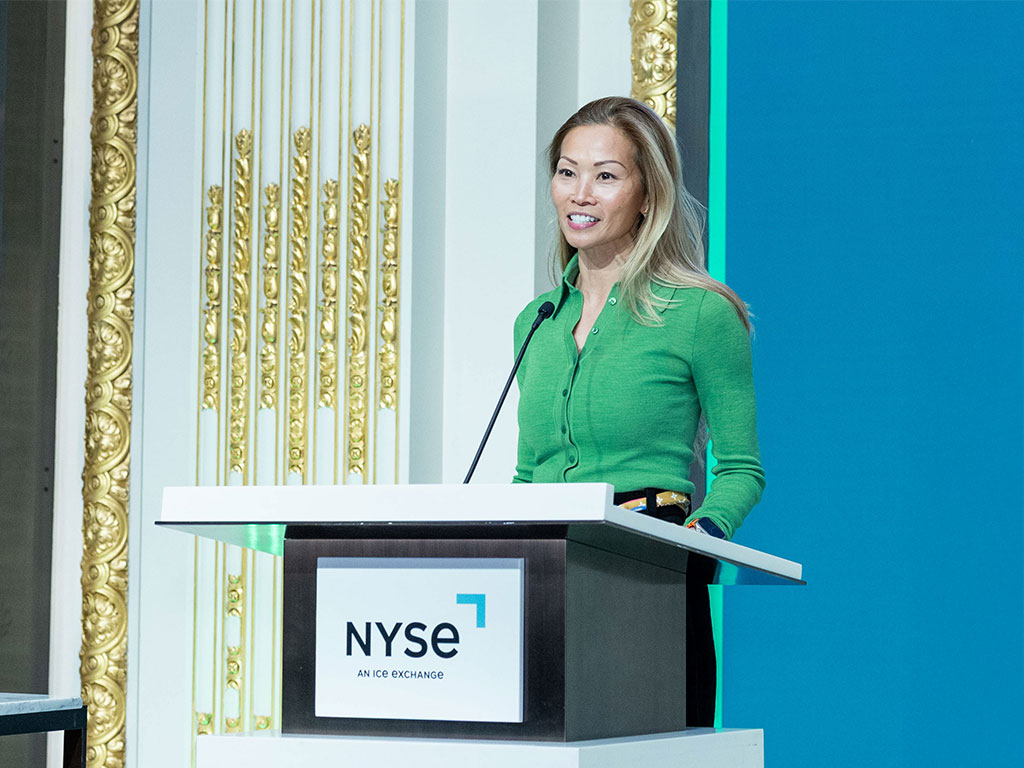
International Listings
Connect to opportunity
Contact us today about becoming part of the world's largest exchange.
A global network: unmatched in size & scale
International Listings highlights 2025

Source: FactSet; Percentages refer to % of total market value of companies listed in the US which are listed on NYSE, by region (as of 9/30/2025)
International IPOs & Listings
NYSE International Listings Happen Here!
News

Cassandra Seier
The woman challenging Nasdaq’s monopoly on Israeli tech
More news items
NYSE TV Live
NYSE TV Live is a weekday morning program broadcast live from the iconic NYSE trading floor, covering news impacting global markets and the economy. The show is anchored by Kristen Scholer, a renowned broadcast journalist and veteran reporter for The Wall Street Journal, CNBC, and Cheddar News. The program features special guest interviews with leading market and industry experts, as well as business and political leaders and other notable visitors to the Exchange.
NYSE Floor Talk
NYSE Floor Talk is a premier interview series for business leaders, innovators, and newsmakers. From new business initiatives to key milestones and the latest news trends, the show delves into a wide spectrum of topics, providing viewers with an inside look at how icons and disruptors are reshaping the world.
Taking Stock
"Taking Stock” is an engaging and informative interview segment that dives deep into the world of finance, the economy, and how groundbreaking ideas and products impact the business landscape. The show features dynamic conversations with industry leaders, offering viewers a unique opportunity to gain insights directly from the minds behind successful businesses.
Whether it's uncovering growth opportunities or analyzing potential investment prospects, this show serves as a valuable resource for staying informed and connected to the pulse of the business world. Tune in to discover the latest updates from both established and up-and-coming companies.
Inside the ICE House
More episodes
Related information
Ways to List
Listings Process
An exclusive visit to NYSE in Mandarin
Embark on an exclusive captivating Mandarin tour of the NYSE with its rich history and remarkable evolution over the past 230+ years.
Ways to List
Listings Process
An exclusive visit to NYSE in Mandarin
Embark on an exclusive captivating Mandarin tour of the NYSE with its rich history and remarkable evolution over the past 230+ years.
NYSE Tech Summit San Francisco 2025
The New York Stock Exchange hosted our annual NYSE Tech Summit in San Francisco on May 15, 2025, as well as a private dinner reception in partnership with Greylock. Speakers and attendees from the NYSE community.
NYSE International Day 2025
Register now for 2025 NYSE International Day on Thursday, Oct 23! The NYSE International Day is an annual marquee event which brings together global business leaders including founders, C-Suite executives, top-tier investors, and members of the NYSE-listed community for an insightful day.